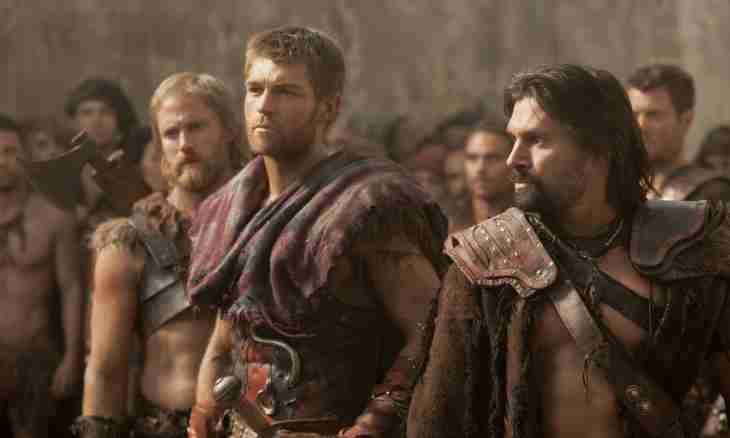Spartacus's image found broad reflection in world fiction and art. Spartacus is the real personality who became history thanks to the courage, ingenuity and organizing abilities. He excited the largest rebellion of slaves for all history of existence of Rome.
Spartacus. Short biography
Spartacus was a free resident of the Province of Thrace (modern territory of Bulgaria). The exact place and year of birth of Spartacus are unknown. At first Spartacus served as the mercenary in the Roman army, then ran, but was taken prisoner by Romans and sold in gladiators. However for the courage and courage it was given freedom and appointed the teacher at school of gladiators in Kapuye. Died in April of 71 years BC, battling in fierce fight.
As the gladiator Spartacus looked
Unfortunately, no lifetime sculptures or frescos with Spartacus's image remained. In the antique works Plutarch describes Spartacus as the courageous, brave Thracian differing physical in force, ingenuity and softness of character.
History of revolts of Spartacus
In the 74th year BC at school of gladiators there was a plot of slaves which was headed by brave and enterprising Spartacus. The plot was opened and tried to be suppressed, however 70 slaves managed to run and arrange the camp on the mountain Vesuvius. Gradually the number of risen increased due to joining to them of other slaves and peasants from the neighboring villages.
The first victory led by Spartacus took place in the 73rd year BC. The camp of runaway slaves at top of Vesuvius was surrounded by the Roman army and the only road conducting on top is blocked. Then Spartacus made the decision to outwit Romans: at night slaves weaved ropes out of a grapevine, went down on them and came into the back of army of Romans. Not expecting it, Romans were attacked and broken.
The second army sent to destroy runaway slaves also failed. Many Roman mercenaries refused to battle and joined Spartacus. Having prevoskhody organizing abilities, Spartak managed to turn the camp risen in full-fledged army: training in fight was conducted, soldiers slaves were provided with weapon, in army there was a hierarchy. Gradually number risen led by Spartacus increased and by different calculations was from 60 to 120 thousand people.
Gradually between Spartacus and his colleagues there was a dispute on further actions. Spartak suggested to give to slaves an opportunity to return home instead of attacking Rome therefore the most part of the general army moved the North. A smaller part remained in the south which was broken subsequently by the Roman legionaries. Spartacus decided to return on the South with the purpose to excite the Sicilian rebellion. To prevent it, against Spartacus two armies of Romans which were soon defeated were put forward.
Because of successful command of Spartacus the Roman commanders long time refused to head a campaign against risen. At last it was conceived to send new army headed by the cruel and cunning commander Mark Litsiny Crassus. The first step to stop army of slaves at the way to Sicily it was unsuccessful: Spartacus's army broke through strengthening, escaped from an environment and went to the sea seaport of Brindisi. Having arrived there, Spartak learned that Mark Crassus's army, but also two armies of commanders Gney Pompey and Lukull Lution Litsiniya goes to Brindisi not only.
In 71 BC in Apulia there was the last battle between Spartacus's army and the Roman legionaries. Spartak was killed in battle, to the last lifting heroic spirit of the army. Most of slaves were killed, and on the road from Kapui to Rome about 6 thousand risen slaves were executed.

